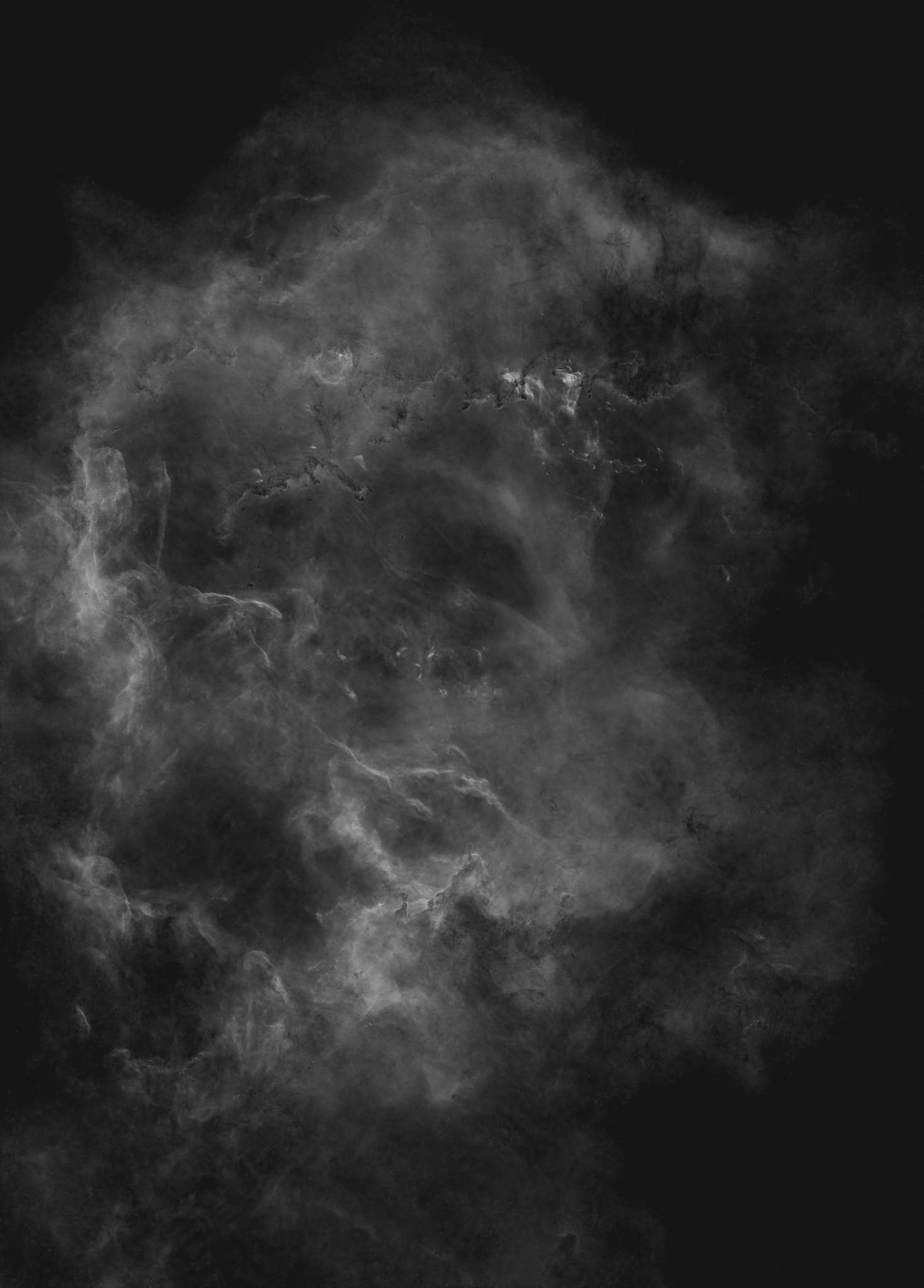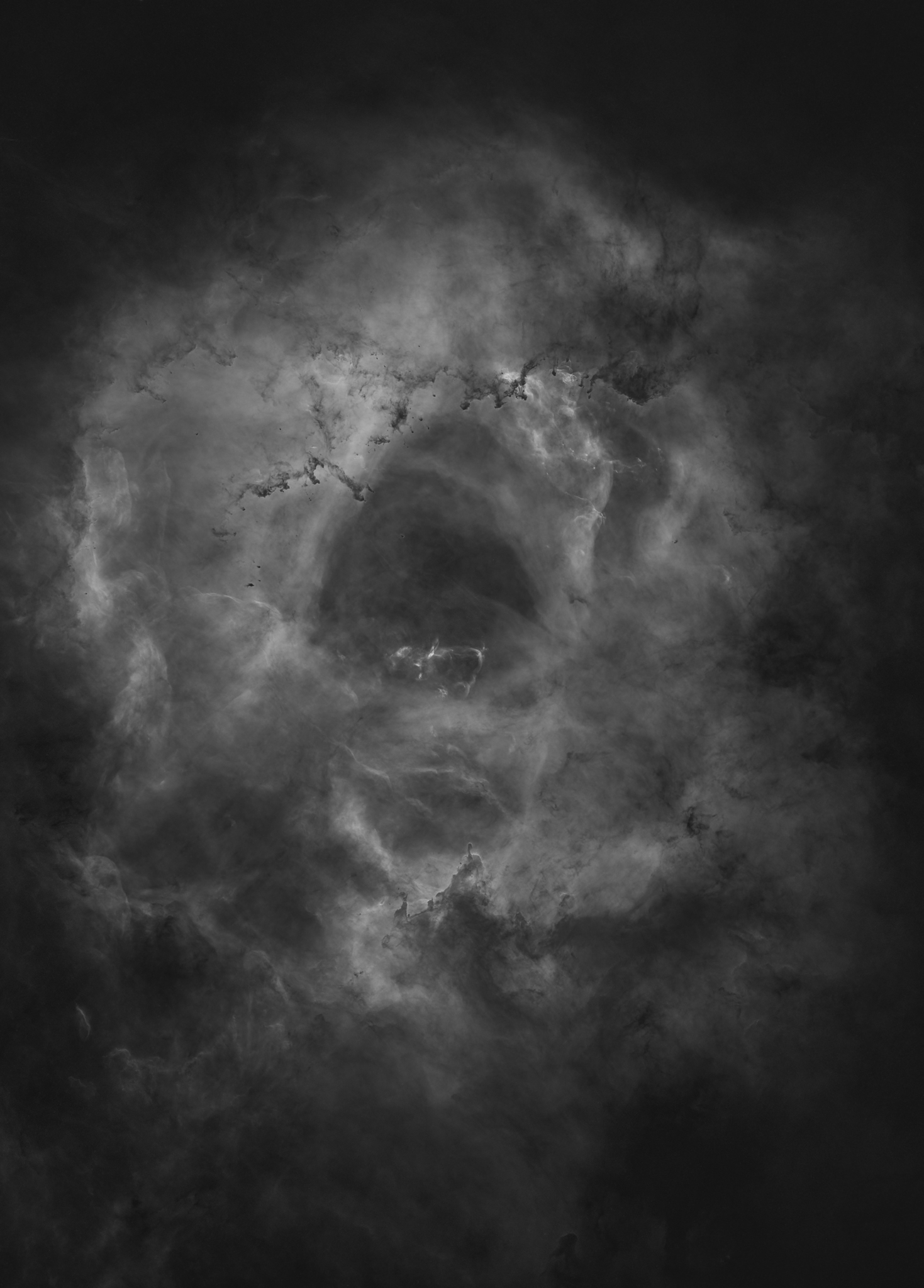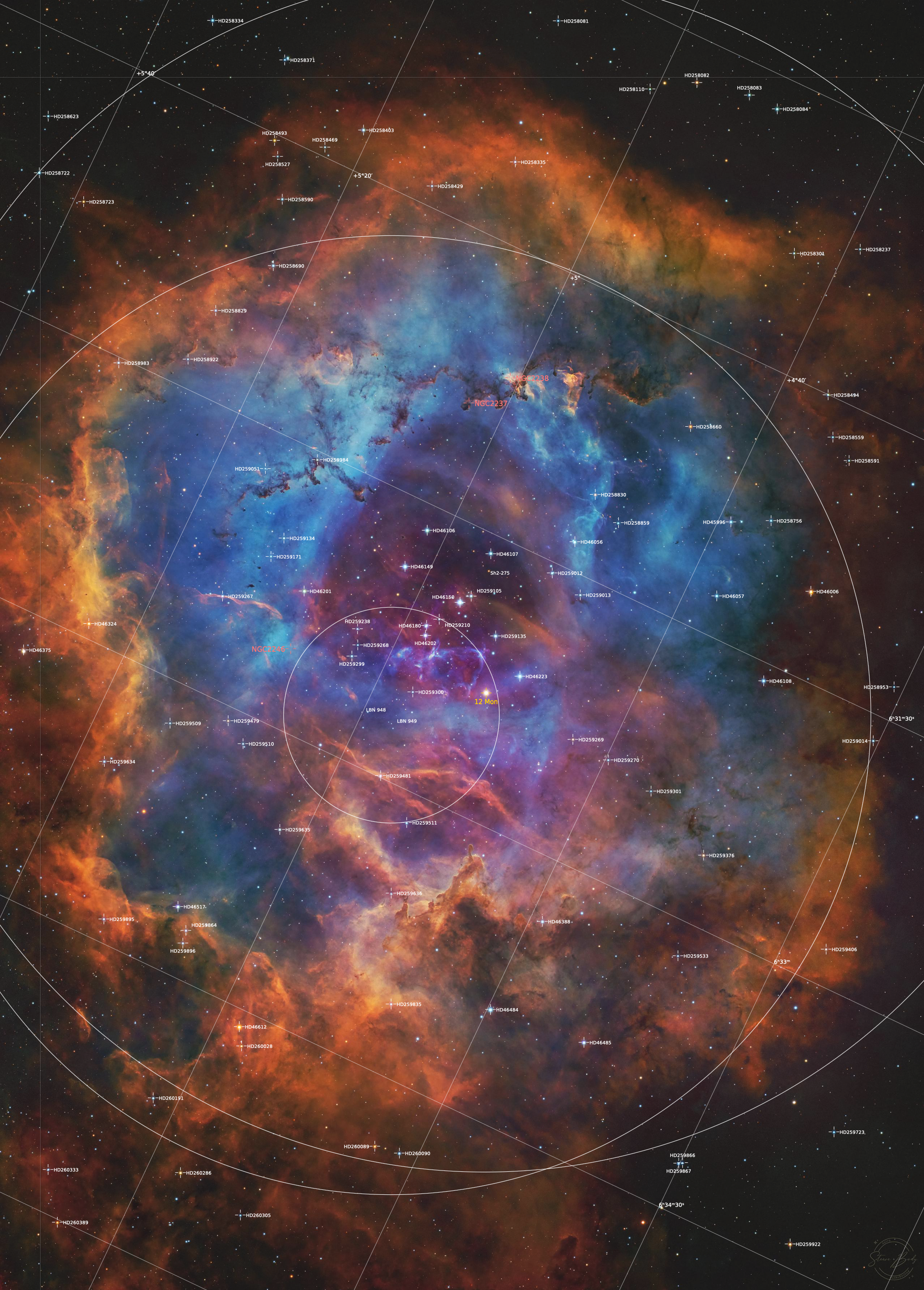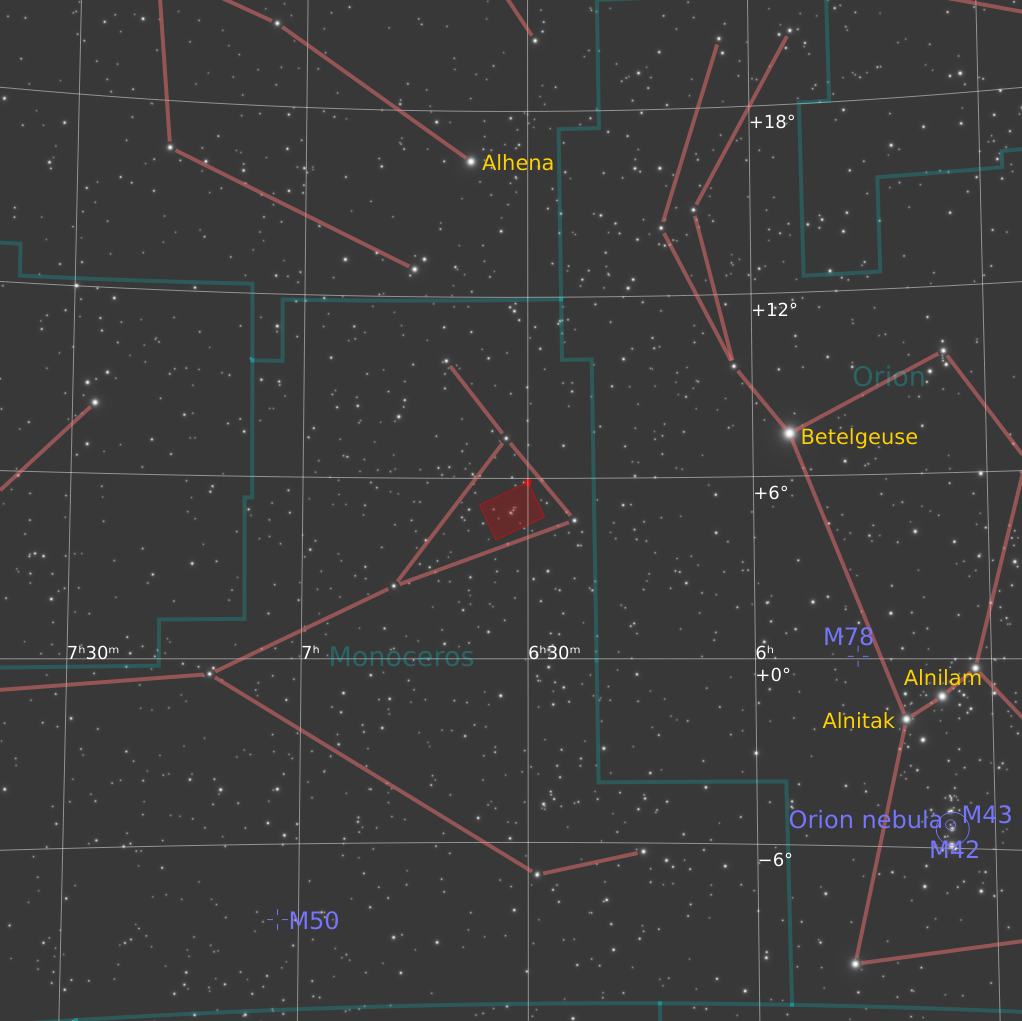Rediscovering the Rosette Nebula: A Journey Through Time and Space
The Rosette Nebula as Captured by the Askar 107
As an astrophotographer, revisiting celestial wonders like the Rosette Nebula is not merely a pursuit of capturing their ethereal beauty; it’s a journey of growth and evolution in both skill and perspective. The Rosette Nebula, or Caldwell 49, has always held a special place in my heart, marking my foray into the world of narrowband imaging. This two-panel mosaic, captured through my trusted Askar 107, is a testament to this ongoing voyage.
Astrophotographic Techniques and the SHO Palette
In processing this image, I’ve delved into the classic SHO (Sulfur, Hydrogen, Oxygen) palette, with a keen focus on accentuating the sulfur component. This approach has unearthed stunning details and vibrant red hues, previously overshadowed in other emissions. These nuances bring forth intricacies in the nebula’s structure, highlighting aspects that were less pronounced in earlier captures.
The Rosette Nebula: An Overview
The Rosette Nebula, nestled approximately 5,000 light-years away in the constellation Monoceros, is a vast expanse of gas and dust. Its distinctive rose-like appearance, which intriguingly resembles a skull depending on its orientation, offers a rich palette for astrophotographers. This interstellar cloud is not just a visual marvel; it’s a bustling hub of star formation, showcasing the dynamic processes that shape our universe.
In conclusion, this latest rendition of the Rosette Nebula is more than a capture of its stunning aesthetics; it represents a confluence of advanced imaging techniques and a deeper understanding of our cosmos. It’s a visual chronicle of my growth as an astrophotographer and a homage to the ever-changing yet timeless beauty of the universe.






